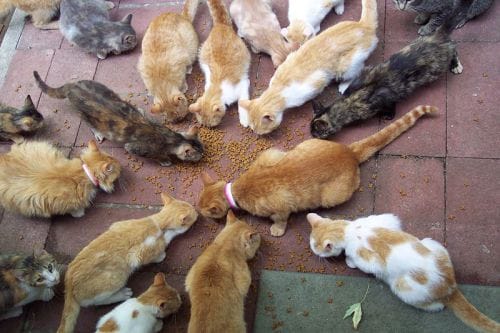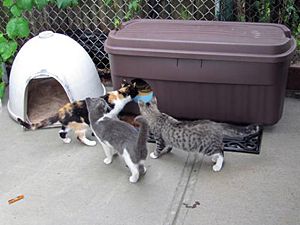TNR Method: The Best For Brooklyn Cats


Cats are no strangers to the stoops of Park Slope. Have you seen a cat or two (or twenty perhaps!) roaming the neighborhood? In municipals like New York City, this wandering cat is likely a feral one. What you might not know is that there are many dedicated volunteers out there who work to make the city a little better for these NYC natives, and you could be one of them!
Feral, or wild, cats are different from strays. They’ve had very little human contact in their lives and generally cannot be domesticated. Feral cats live in colonies and are found close to food and shelter. Of course, these cat colonies grow (and grow and grow…) as unneutered cats breed, often leading locals to complain about the disturbance in their neighborhood. And, unfortunately, many of these cats are trapped and cruelly killed because they’re too wild to be pets.
Luckily, there’s a better way to deal with the climbing feral cat population in Brooklyn, NYC, and other large cities facing similar community cat crowding problems. Endorsed by the ASPCA, the Trap-Neuter-Return (TNR) method has been gaining a reputation for humanely, effectively, and cost-efficiently managing feral cat colonies. It works exactly as its name suggests — cats are trapped, sterilized, vaccinated, ear tipped (for future recognition), and returned to their home. After that, the population starts to decline naturally and neutering actually improves the behavior of the cats.
The TNR procedure is practical and achievable, but it relies solely on individual and group volunteers. Volunteers, such as Tara, who works with Brooklyn Animal Action, all start trapping in different ways. Tara’s activism began two years ago while working in Manhattan Beach at a nursing home. She noticed a colony of cats at the home — mostly female — and three were pregnant. She was prompted to learn about TNR and even wound up fostering the feral moms and their kittens, releasing them after they had nursed and been neutered.
Tara was hooked. “I started fostering, rescuing, and doing TNR full force after this.” She says she was able to learn about the TNR method through “working with experienced TNR volunteers and [taking] the Neighborhood Cats TNR Workshop.”
Winter can be a rough time for outdoor community cats. Tara says that she’s “been trapping sicker cats in the winter months…a lot have upper respiratory infections.” To combat the cold, the NYC Feral Cat Initiative lists resources that are full of ideas for building cat shelters and offers places to buy them so you can personally save the lives of cats that can’t be fostered.
But winter is also a wonderful time to trap cats, as there is a lull in breeding and you can trap fewer pregnant and lactating cats. “There are fewer kittens in the winter months,” Tara says. With fewer kittens and peak-breeding season looming just around the corner (typically February), now is the time to trap. If you can finish trapping a colony in the winter, fewer kittens will be around in the spring and the cycle ends inherently.

Many people simply don’t know about the feral cat problem around the city. And if they do, they’re not always aware of the effectiveness of TNR. Some don’t know where to turn when faced with a large feral cat colony in their neighborhood.
Belinda, vice president of Brooklyn Animal Action, says, “We desperately need politicians to start supporting the work we do — because the city right now does almost nothing…there is so much the city could do — even simple awareness campaigns on spay/neutering, encouraging landlords and management companies to support TNR rather than poisoning cats, providing recovery space for TNR…not stuff that even requires lots of money!”
“We need to provide education to the community…the TNR community needs more volunteers!” Tara agrees. “The most rewarding part of the work is knowing the cat is vaccinated, testing, and never going to reproduce again. You can totally see the physical and emotional difference in a TNR’d cat. Their appearance is healthier and their attitudes are tamer.”
Tara has trapped all over Brooklyn and is currently fostering 16 cats, in addition to four of her own, and she “loves them all!”
It’s time started spreading the word about TNR. Inform your neighbors, Park Slope! To learn more about NYC’s feral cats, TNR, and how to get involved, visit Neighborhood Cats, Brooklyn Animal Action, or NYC Feral Cat Initiative.
For more tips for pets (and their owners) in the neighborhood, check out Park Slope for Pets.
Are you a single pet owner or pet lover? Be sure to come to our Meet My Owner Singles Mixer on February 10!




